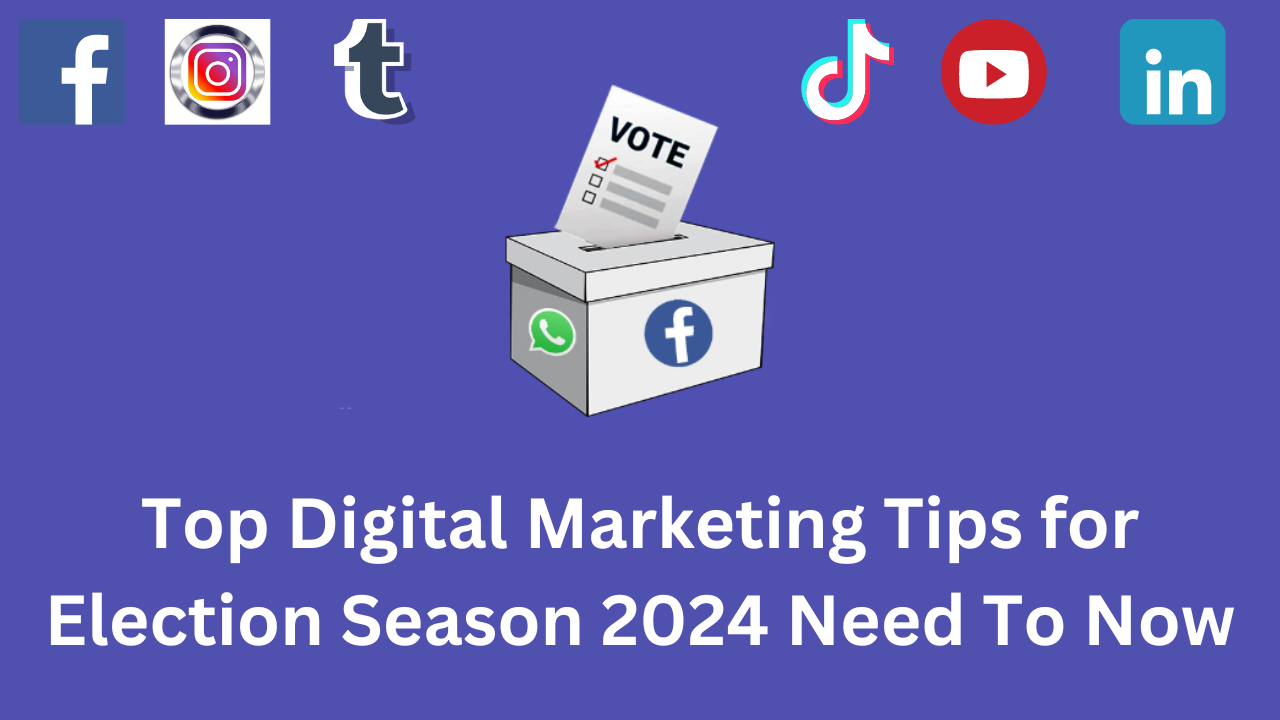
As the 2024 election season approaches, digital marketers are gearing up for a period of intense competition and strategic maneuvering. The political climate not only influences public discourse but also significantly impacts the digital marketing landscape. Here’s how digital marketing plays a pivotal role during election seasons and strategies to navigate the challenges.
How Can Brands Advertise During Elections 2024?Every One Hides
Why Elections Matter in Digital Marketing
Election seasons are characterized by heightened online activity, with users actively seeking information about candidates, policies, and political events. This surge in online engagement presents a unique opportunity for digital marketers to capture attention and drive traffic. However, it also brings challenges such as increased ad costs and limited ad space.
The Battle for Ad Space: Increased Costs and Limited Availability
During elections, political campaigns invest heavily in digital advertising, leading to increased costs and limited availability of ad space. The competition for visibility becomes fierce, and the cost-per-click (CPC) for ads can skyrocket.
The Budget Surge: Why Costs Inflate
The inflation in advertising costs during elections is primarily due to the surge in demand. Political campaigns are willing to pay top dollar for prime ad space, driving up the market price and making it more expensive for non-political advertisers to compete.
Consequences of High CPC
High CPC rates can strain marketing budgets and reduce the overall return on investment (ROI) for campaigns. Marketers must be more strategic in their spending to ensure that they are reaching their target audience without overspending.
Budgeting Wisely: Strategies for Smart Spending
Allocate More Funds
Anticipate the increase in advertising costs and allocate additional funds to your marketing budget during the election season.
Long-tail Keywords
Focus on long-tail keywords that are less competitive but still relevant to your target audience. This can help you maintain visibility without breaking the bank.
Geo-targeting
Use geo-targeting to focus your ads on specific regions where your audience is most likely to engage, reducing wasted spend on irrelevant impressions.
Seasonal Trends
Adjust your marketing strategy to capitalize on seasonal trends and events related to the election, making your content more timely and relevant.
Timing Is Key: Maximize Ad Exposure at Lower Costs
Non-Peak Hours
Consider running your ads during non-peak hours when competition is lower, and ad costs are more affordable.
Dayparting
Use dayparting to schedule your ads to appear at times when your target audience is most active online, maximizing exposure and engagement.
Frequency Capping
Implement frequency capping to limit the number of times your ad is shown to the same user, ensuring that you’re not overspending on redundant impressions.
Ad Creatives: Differentiate to Dominate
Emotional Connection
Create ad creatives that resonate emotionally with your audience, making your brand more memorable and engaging.
Call-to-Action (CTA)
Craft a compelling CTA that encourages users to take action, whether it’s visiting your website, signing up for a newsletter, or making a purchase.
Embrace Alternative Channels
Consider diversifying your marketing efforts by exploring alternative channels such as email marketing, content marketing, and social media platforms that may be less affected by election-related ad competition.
The Algorithmic Shift: Search Engine Algorithms and User Behavior
Election seasons can also influence search engine algorithms and user behavior. As political content dominates search results, marketers need to adapt their SEO strategies to maintain visibility.
Adapt to Trending Topics: Be Agile but Tactful
Stay agile by adapting your content to include trending political topics, but do so tactfully to avoid alienating your audience or appearing opportunistic.
Real-time Keyword Analysis
Conduct real-time keyword analysis to identify emerging trends and adjust your PPC campaigns accordingly to capitalize on timely opportunities.
Conclusion
Digital marketing during election seasons requires a strategic approach to navigate the challenges of increased costs, limited ad space, and shifting user behavior. By being proactive, budgeting wisely, and adapting to the changing landscape, marketers can successfully navigate the 2024 election season and make a significant impact in the digital space.

